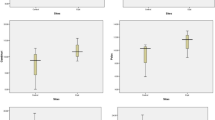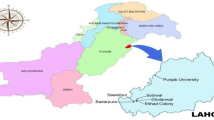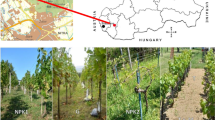Abstract
Mortality rates of seedlings of sandalwood (Santalum album L.) of more than 40% have been observed in cool wet upland areas in various countries. Mortalities are caused by low sunlight intensity and high soil humidity after watering, when seedlings are growing in modern shade houses (paranet roof with 50% solar intensity) in relatively high rainfall upland areas. To cope with this problem, it is proposed to use conventional sheltering construction with roof material modification as one of the alternatives to implemented to intensity solar radiation and reduce soil humidity. This method was proposed to increase the growth rate and reduce fungal decay in seedlings. The study observed the effect of various roof materials used with conventional nursery construction on growth of sandalwood seedlings. A randomized block design was adopted, with treatments consisting of roof material types, including coconut leaf (Cocus nucifera), imperata grass (Imperata cylindrica), transparent plastic, plastic roof (laserlaip), and paranet. A modern shade house was used as a control variable. The experimental design included three blocks and each block consisted of 50 replications. Conventional sheltering devices were found to be superior to other devices for 8-month-old sandalwood seedling. The conventional seedling sheltering device from corrugated plastic roof (laserlaip) resulted the greatest growth in height and diameter and greatest survival percentage of sandalwood seedlings. The highest to lowest rank of growth in order were plastic roof, paranet, transparent plastic, coconut leaf, imperata grass, and shade house, with survival percentage in each sheltering device of 62.12%, 53.55%, 41.81%, 40.82%, 38.51%, and 12.82%, respectively. Waving plastic roof resulted in highest seedling growth than other treatment because it is protected from rain water (waterlogging) and will raise the temperature and the intensity of sunlight received.
Similar content being viewed by others
Notes
The conventional nursery structure is of poles rather than steel or bricks, and can be constructed by communities and smallholders.
References
Applegate GB, Chamberlain J et al (1990) Sandalwood in the Pacific, a state of knowledge synthesis and summary from the April 1990 Symposium. Symposium on sandalwood in the Pacific, United States Department of Agriculture, Honolulu, HI
Barett DR, Fox JED (1995) Geographical distribution of Santalaceae and botanical characteristics of species in genus Santalum. In: Gejerum L, Fox JED, Ehrhart Y (eds) Sandalwood seed nursery and plantation technology, FAO, Suva, Fiji, Field Document No. 8 (RAS/92/361), pp 3–23
Bergez JE, Dupraz C (2000) Effect of ventilation on growth of Prunus avium seedlings grown in tree shelters. Agric Forest Meteorol 104:199–214. doi:10.1016/S0168-1923(00)00163-5
Darmokusumo S (2001) Pengembangan Cendana (Santalum album L.) di Propinsi Nusa Tenggara Timur, Pusat Penelitian Biologi LIPI. Berita Biologi Edisi Khusus 5(5):521–517
Dickson A, Leaf AL, Hosner JF (1960) Quality appraisal of white spruce and white pine seedling stock in nurseries. Forest Chron 36:55–60
Goodall DW (1954) Angew. Planzensoziologic. In: Wilde SA, Corey RB, Iyer JG (1979), Voigt GK (1979) Soil and plant analysis for the tree culture, 5th revised edn. Oxford and IBH Publishing Co., New Delhi
Hamzah Z (1976) Sifat Silfika dan Silvikultur Cendana (Santalum album L.) di Pulau Timor, Laporan No. 227, Lembaga Penelitian Hutan, Bogor
Hutchine DE (1884) Sandal. In: Barret DR (ed) 1985. Santalum album (Indian sandalwood) literature review, Mulga Research Centre, Western Australian Institute of Technology, Perth
Kharisma A, Suriamihardja S (1991) Pengaruh Lama Naungan Terhadap Pertumbuhan Bibit Cendana (Santalum album L.), Buletin Santalum No. 6. Balai Penelitian dan Pengembangan Kehutanan Bali dan Nusatenggara Kupang
Mayhead GJ, Boothman IR (1997) The effect of treeshelter height on the early growth of sessile oak (Quercus petraea matt. Liebl.). Forestry 70:151–155
Pusat Penelitian Tanah dan Agroklimat (1993) Peta Tanah Propinsi Nusa Tenggara Timur. Pusat Penelitian Tanah dan Agroklimat. Badan Penelitian dan Pengembangan Pertanian, Bogor
Rain SN (1990) Status and cultivation of sandalwood in India. In: Hamilton L, Conrad CE (eds) Proceeding of Symposium on sandalwood in Pacific, United States Department of Agriculture, Honolulu, 9–11 April 1990
Santoso S (2000) SPSS Mengolah data Statistik Secara Profesional Versi 7.5. P.T. Elex Media Komputindo, Jakarta
Schmidt FG, Ferguson JHA (1951) Rainfall types based on wet and dry period ratios for Indonesia with Western New Guinea, Verhand 42. Direktorat Meteorologi dan Geofisika, Djakarta
Surata IK (1994) Pengaruh Tinggi Bibit Terhadap Keberhasilan Tumbuh Cendana (Santalum album L.). Balai Penelitian Kehutanan Kupang. Santalum 9:1–9
Surata IK (2006) Teknik Budidaya Cendana. Badan penelitian Dan Pengembangan Kehutanan, Pusat Penelitian Hutan dan Konservasi Alam. Balai Penelitian dan Pengembangan Kehutanan Bali dan Nusa Tenggara. Aisuli No. 21. Kupang
Surata IK, Idris M (2001) Status Penelitian Cendana di Propinsi Nusa Tenggara Timur. Berita Biologi Edisi Khusus 5(5):1–9 Pusat Penelitian Biologi LIPI, Bogor
Steel RGD, Torrie JH (1980) Principles and procedures of statistics. McGraw-Hill, New York
Tuley G (1983) Shelters improve the growth of young trees in forest. Q J Forest 77(2):77–78
Acknowledgments
We thank Dr. Jeanine Pfeiffer (instructor and reviewer from Davis University of California, USA) for their technical assistance, the Forest Research Institute Kupang for financial support, Johanes Naklui for kindly supplying the S. album seed, and Steve Harrison for assistance in preparation of the paper.
Author information
Authors and Affiliations
Corresponding author
Rights and permissions
About this article
Cite this article
Surata, I.K., Butarbutar, T. Shading System on Sandalwood Seedlings in Timor, East Nusa Tenggara, Indonesia. Small-scale Forestry 7, 311–318 (2008). https://doi.org/10.1007/s11842-008-9057-z
Received:
Accepted:
Published:
Issue Date:
DOI: https://doi.org/10.1007/s11842-008-9057-z




